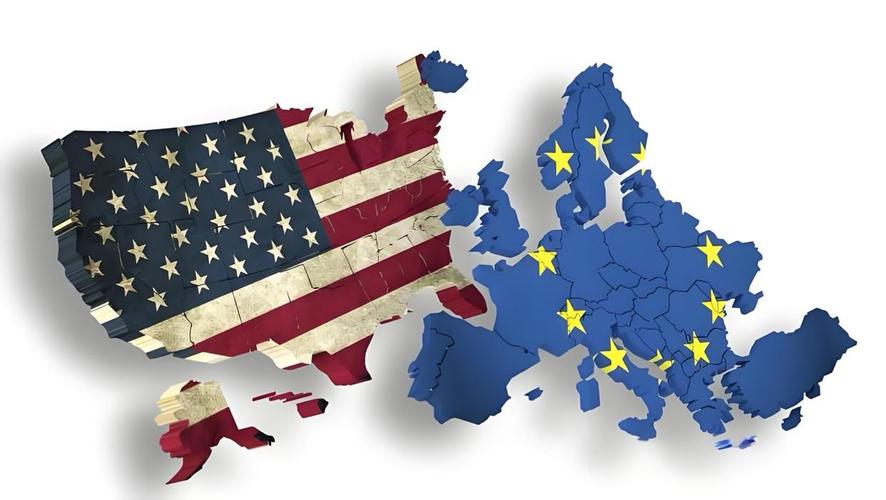
On May 7th, the Federal Reserve announced that the target range for the federal funds rate remained unchanged at 4.25% to 4.5%. This is the third consecutive month that the Federal Reserve has kept interest rates unchanged after US President Trump constantly "called out" to urge interest rate cuts. The Federal Reserve's continuous suspension of interest rate cuts in response to Trump's pressure has sparked heated discussions in the market. What are the influencing factors behind this and how vulnerable the US financial system is reflected by the Fed's cautious and wait-and-see attitude have become topics of close concern to global investors.
The impact of tariffs is one of the reasons why the Federal Reserve is cautious and wait-and-see. Powell said that as the Trump administration's tariff policy is still evolving, its impact on the economy remains "highly uncertain". If tariffs continue to be implemented subsequently, it may lead to an increase in inflation in the United States, which in turn causes a slowdown in economic growth and an increase in unemployment. The chief equity strategist of Bank of America Wealth Management Group said that the Federal Reserve is in a difficult situation as the scale and extent of tariffs are still evolving. According to the remarks of Federal Reserve Chair Powell, the Federal Reserve is now waiting for the right moment. During the period before the next interest rate decision, the Federal Reserve may need to further observe the development of Trump's tariff policy.
The pessimistic economic data is another reason why the Federal Reserve has chosen to pause interest rate cuts in the volatile financial market. According to data released by the US Department of Labor, the US consumer price index rose by 2.4% year-on-year in March 2025, and the core CPI increased by 2.8% year-on-year. The growth rate was much higher than the long-term target of 2% set by the Federal Reserve. The data indicates the existence of inflation risks. According to data from the US Department of Commerce, the US GDP shrank by 0.3% in the first quarter of 2025, presenting the worst quarterly performance of the US economy since 2022. The inflation risks reflected by the data and the concerns over stagflation that may result from an economic downturn have made the Federal Reserve's choice difficult. Against this backdrop, it has no choice but to pause interest rate cuts in the precarious situation.
The balance and consideration of market expectations is another important reason for the Federal Reserve to hold its ground. As of May 6th, according to the Chicago Mercantile Exchange Tool, the futures market expects the probability of the Federal Reserve keeping interest rates unchanged this week to exceed 95%. On the eve of the interest rate meeting, the Exchange Watch tool shows that traders in the interest rate market expect the probability of the Federal Reserve pausing rate hikes to exceed 99%. Under the general market expectation that the Federal Reserve will "hold steady", every move of the Federal Reserve may trigger excessive market reactions. Especially when economic data is insufficient, the Federal Reserve needs to carefully weigh the pace of monetary policy adjustments to avoid the possible excessive shock that monetary policy may bring to the financial market.
The disagreement over balance sheet reduction was a major driving factor for the Federal Reserve to pause interest rate cuts. According to market sources, officials within the Federal Reserve have different opinions on the pace of the quantitative tightening action of reducing the balance sheet. Nick Timiraos, known as the new Fed News Agency, commented that Fed officials have different opinions on the two key points of protecting jobs and fighting inflation, and a trade-off needs to be made. The still excessively high core consumer price index and the still controversial unemployment rate have made it difficult for the Federal Reserve to make a choice internally when deciding whether to continue reducing its balance sheet.
Taking all aspects into account, the Federal Reserve's decision to hold its ground at the interest rate meeting in May reflects the multiple vulnerabilities of the US financial market. Trump's tariff policy has brought shocks to the US market, and the pessimistic economic data have made the Federal Reserve face the dilemma of choosing between fighting inflation and preventing stagflation. The highly consistent psychological expectations in the financial market may cause an overreaction in the Federal Reserve's monetary policy. Maintaining employment and combating inflation have led to certain differences within the Federal Reserve regarding the issue of balance sheet reduction. These uncertainties accumulate layer upon layer, reflecting the fragility of the US financial market while also prompting the Federal Reserve to adopt a monetary policy of continuing to pause interest rate cuts.
In the current situation where financial risk factors are coming from multiple aspects, global investors should closely monitor market trends, carefully grasp the monetary policy directions of various countries, and promptly improve their own asset risk management and allocation. Only by grasping market information from multiple aspects and constantly making rational decisions can they go further in the current market environment.

Since 2025, the conflict between the United States and Europe over the governance of the digital economy has continued to escalate.
Since 2025, the conflict between the United States and Euro…
When German Chancellor Mertz officially announced that he w…
On December 3rd local time, the copper price on the London …
The European Commission announced a new economic security s…
The European Commission announced a new economic security s…
For nearly a year, US President Donald Trump has launched a…